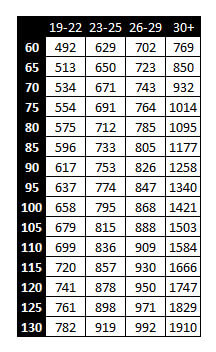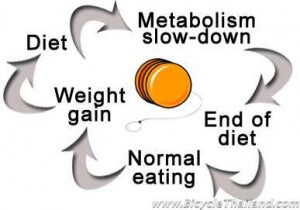How I lost 10% of my body weight by cycling for a month!

Cycling is something anyone can do and it does not take long to jumpstart your weight loss with a little bit of simple planning. Here is how I did it. I spent 30 days cycling 50kms a day, which is about 2 and 1/4 hours for me. I know it sounds like a lot if you have a full workweek but I determined that some things are more important than others for me, like my health.
At the beginning of the month I weighed just over 100kgs. I stand 187cms (6’2”) and realistically, for my height, I should weigh about 80kgs. I decided to fast track my weight loss by doing two simple things; controlling the portions size of the things I ate, and eliminating snacks and drinks with sugar in them. Soda, juice and beer are prime examples of these. Over the course of 30 days I dropped 10kgs, or 10% of my body weight.
Spending a few hours riding a bicycle really helps to boost your metabolism. It means that every day your body is in the burn more calories mode; this is the opposite of what happens when you diet and starve your body. When you starve your body it starts to slow your metabolism, and that’s not good for weight loss.
As a male, I found that, based on average, I should consume and use around 2,700 calories per day at my current age of 39 and my starting weight of 100kgs. This 2,700 calorie number is enough to sustain my normal daily activities and it assumes that I do very little exercise. Find your basic calorie consumption and use rate for your current age and weight. You should never eat less than 1,300 calories a day. This number is deemed the minimum for bodily function.
When I cycle for a couple of hours I burn approximately 1,000 calories or slightly more.
TOP OF CHART: Average cycling speed for entire ride
1ST COLUMN DOWN: Total Weight (Rider+Kit+Bike)
(stand on the scale in your gear holding your bike off the ground)
RESULT COLUMNS: Calories used (burned) per hour of cycling
So my body is burning at least 3,700 calories each and every day I cycle for a couple of hours. By controlling the total calories for my daily meals within a 1,600-2,100 range I was burning roughly 1,800 more calories than I was eating. This is great news! 1,800 calories is about 250 grams of fat. I followed the same routine for 7 days in a row and I lost nearly 2kgs in the first week.
The plan is pretty simple, burn more calories and increase your metabolism by cycling more frequently, and eat less….voila! 10kgs in 30 days!!! The more you weigh the more you’ll lose, the less you weigh the less you’ll lose, as all the numbers scale up and down. This is one reason it becomes difficult to lose more weight as you continue, because you actually weigh less, and it takes less energy to fuel a smaller body and less energy to cycle a smaller body across the landscape.
These are my 5 simple tips to losing 10% of your body weight while cycling in Thailand:
1. Cycle 25km to breakfast; eat simple Thai low fat breakfast.
2. After breakfast cycle 25km to home/work and have a shower.
3. Never drink beer, juices or carbonated sugar drinks.
4. When you want an alcoholic drink, drink spirits with water or diet soda.
5. Eat 5 small healthy Thai portions a day and skip mass-produced (plastic packaged) snacks.
I’m not saying it will work exactly the same for you, but if you give it a go and cut back you can live a long and happy life, and enjoy your cycling in the land of smiles more, because having your body weigh 10% less than it does right now is like removing nearly the entire weight of the bicycle you are pedaling up and down those hills from the equation.

in the heat of thailand v the cool of europe, does the burn rate differ much?